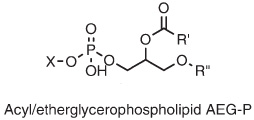Desulfobacter: Difference between revisions
| Line 19: | Line 19: | ||
==Description and Significance== | ==Description and Significance== | ||
The genus sulphobacter includes acetateutelizing sulphate-reducing bacteria. | |||
10 Methyl 16:0 is an unusual bacterial phospholipid fatty acids (PLFA) characteristic of Desulfobacter-type sulphate-reducing bacteria | |||
and hence has been proposed as a biomarker for these bacteria [21,30]. | |||
21-Dowling, N.J., Widdel, F. and White, D.C. (1986) Com- | |||
Revision as of 00:36, 17 March 2008
A Microbial Biorealm page on the genus Desulfobacter
[[Image:.jpg|thumb|350px|right|
Classification
Higher order taxa:
Bacteria; Proteobacteria; delta/epsilon subdivisions; Deltaproteobacteria; Desulfobacterales; Desulfobacteraceae
Species:
|
NCBI: Taxonomy Genome |
Description and Significance
The genus sulphobacter includes acetateutelizing sulphate-reducing bacteria. 10 Methyl 16:0 is an unusual bacterial phospholipid fatty acids (PLFA) characteristic of Desulfobacter-type sulphate-reducing bacteria and hence has been proposed as a biomarker for these bacteria [21,30].
21-Dowling, N.J., Widdel, F. and White, D.C. (1986) Com-
This rod-shaped bacterium is identified as anaerobically growing, motile organism. Desulfovibrio is known as a sulfate reducing bacterium, which has put it to the forefront of biological research. Because of its metal corroding ability, which has consequently led to numerous health and safety concerns in industry, a means to neutralize and better understand Desulfovibrio species is the goal of research on Desulfovibrio (ITQB). The organism however also shows potential for bioremediation, in that it may undergo anaerobic conversion of pollutants in the soil.
Genome Structure
Cell Structure and Metabolism
D. variabilis contains significant quantities of AEG-P (top), and almost 20% of the alkyl-glycerol bond is present as DPG lipids, also known as "cardiolipin" (bottom). Note that the DPGs contain either ether or ester linkages in the core lipids.Sturt et al |
| Sulfate reducers have a wide range of cellular morphologies, including rods, vibrios, ovals, spheres and even tear-dropped or onion shaped cells. Some are motile, others are not. Most sulfate-reducing bacteria are mesophilic, but a few thermophiles are known. Desulfosarcina variabilis is mesophilic, and contains bacterial core lipids (see images on left). The dominant phospholipid headgroups in D. variabilis are Phosphoethanolamine PE (48%) and Phosphoglycerol PG (33%). One study has found that Desulfosarcina variabilis solely contained n-hexadecyl ether side chains. For more information on tetraether lipids found in Archaea, click here. |
Ecology
Although sulfate reduction is thought to be an anaerobic process, sulfate-reducing bacteria (SRB) are also important in aerobic environments if they can proliferate in anaerobic zones. For example, in marine sediments and in aerobic wastewater treatment systems, sulfate reduction accounts for up to 50% of the mineralization of organic matter. Furthermore, sulfate reduction strongly stimulates microbially enhanced corrosion of metals.



